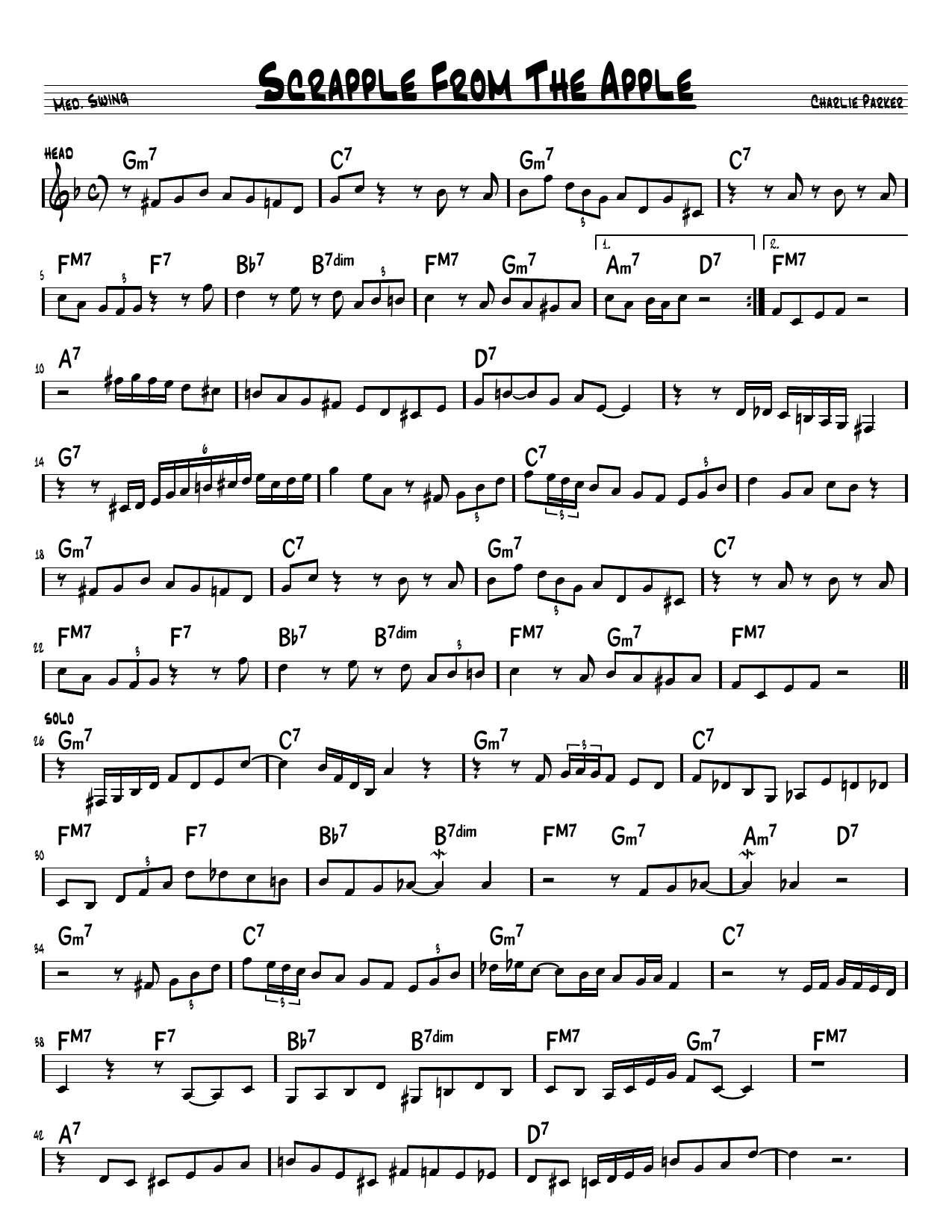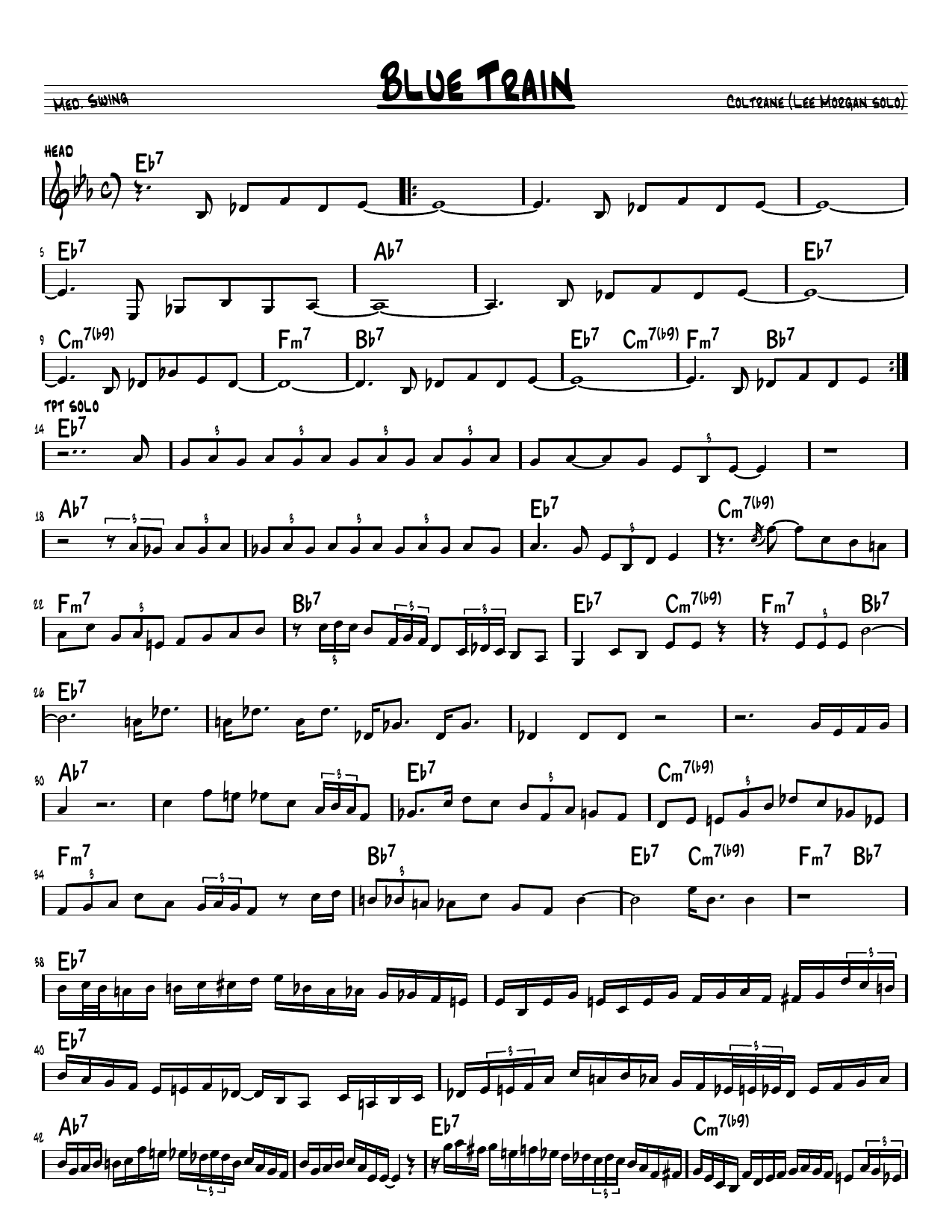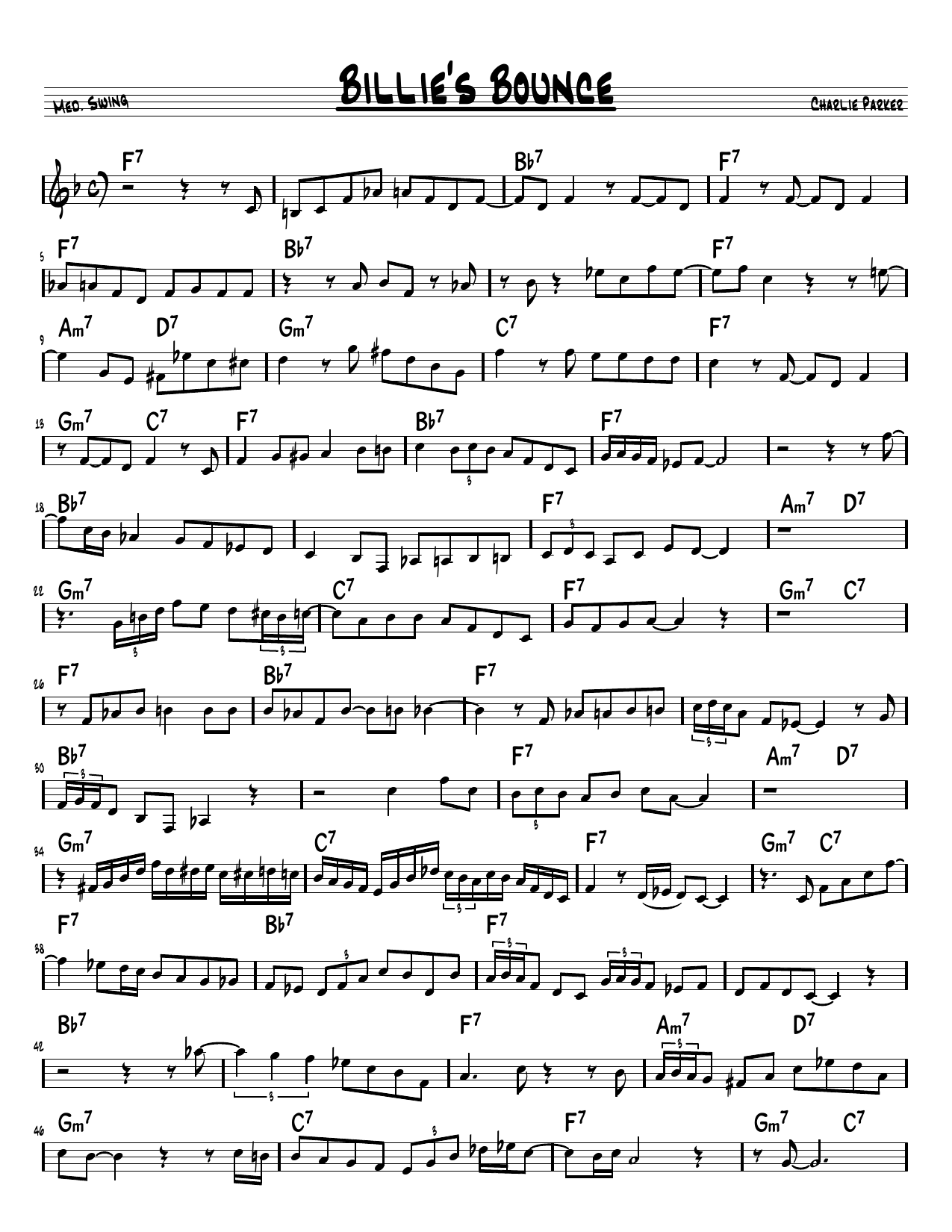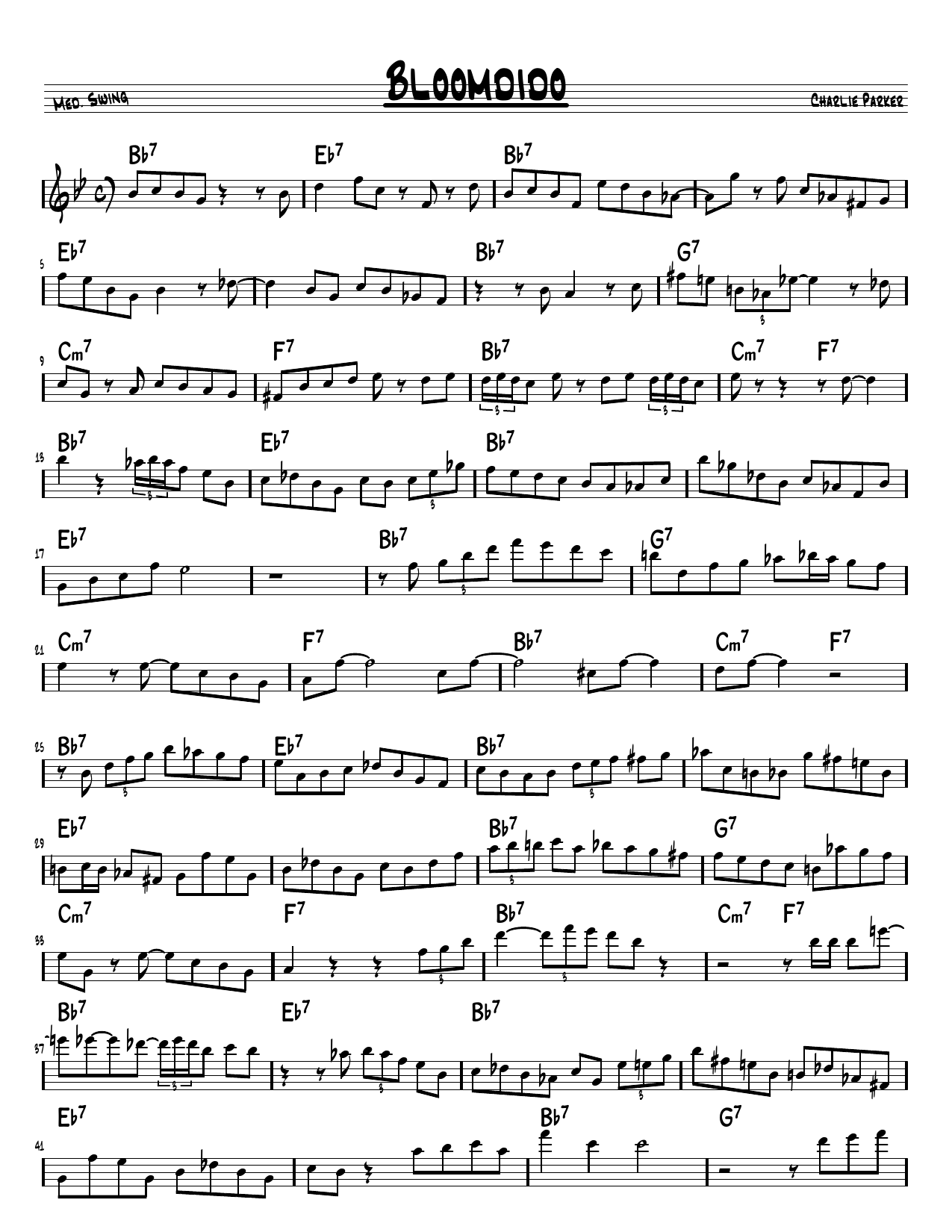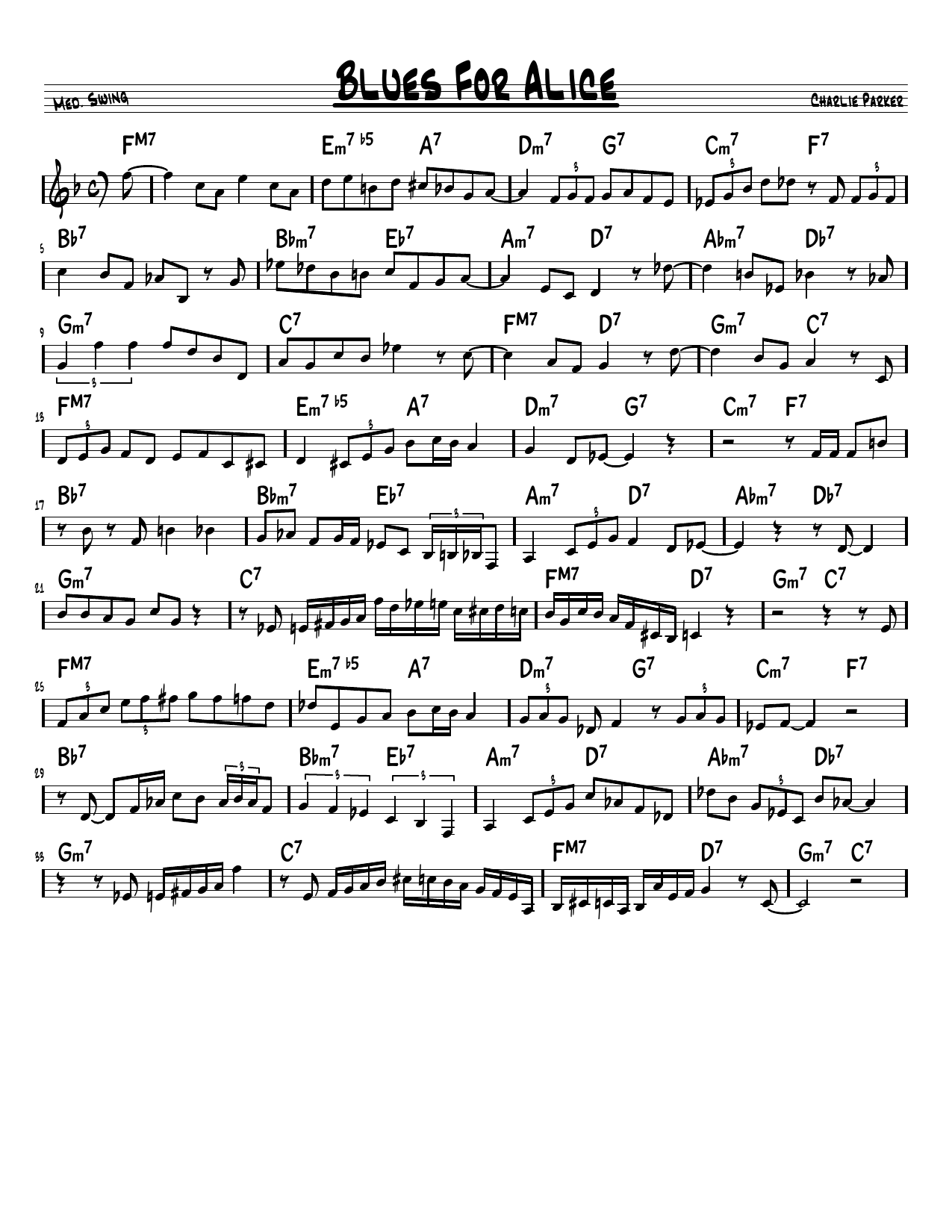A year ago I wrote about composing a solo on All the Things You Are and it still remains the jazz standard that I have the most comfort with. Since then, I also joined an online jazz community and have been upping my game a bit. When this standard came around again, I took the opportunity to find a good version to transcribe and landed on the version from Johnny Griffin, A Blowin’ Session. This is a fairly ridiculous lineup with three (3) tenors at the top of their game: Johnny Griffin, John Coltrane, and Hank Mobley, along with Lee Morgan, Wynton Kelly, Paul Chambers and Art Blakey. Insane! I transcribed a chorus of Mobley’s solo mainly because it’s the chillest one, and I had the best chance of hearing it without a ton of slowing down the music. Transcription follows.
Quick thoughts on this one: we have a fun jazz cliche in bar 6 over the ii-V; the descending figure around bar 29 going into the turnaround sounds a lot like some phrases in his Remember solo.


